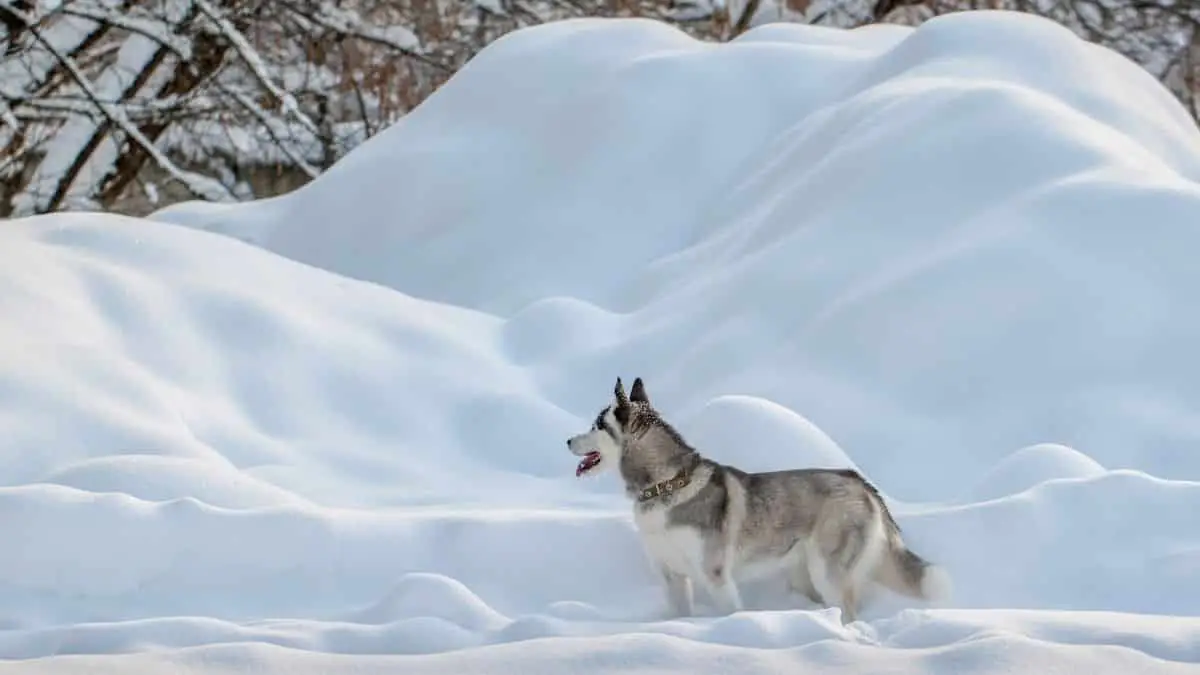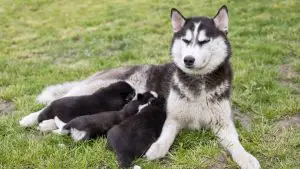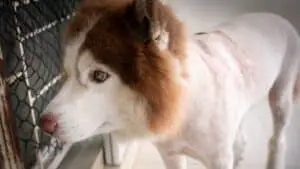Huskies And Their Environment? 3 Things You Should Know
Siberian huskies are just as goofy as they are attractive. You might have come across multiple geographic channels that show these huskies in the colder-ranging climates. From the looks of it, their thick fur coat makes them fit right in.
However, several dog lovers are fancying this breed that does not live in cold areas. Does that mean that these magnificent beasts cannot enjoy some tropical weather? They can, indeed! But then, how do Siberian huskies adapt to their environment?
While huskies are built to thrive in cold weather, there are certain adaptive features they tend to adopt. These include their capacity for dehydration and, consequentially, heating their bodies via exertion.
That said, there is much more to their fascinating mechanism than this. Without wasting any more time, let us dive right into it!
Table of Contents
What Are The Default Habitat Conditions Suitable For A Siberian Husky?
Before getting your hands on adaptability, you must understand what the default suitability for Siberian huskies is. Siberia’s Chukchi people were initially raising the breed for pulling their sleds on frozen grounds. They were bred in a way that they served as working dogs as well as watchdogs.
It means that they were not quite as domestic back then as they are today. That said, how do you distinctly determine the habitat of a typical Siberian husky?
Despite their evolution, their necessary habitat is the climate of cold and snowy conditions. However, that does not mean that they would do terribly in warmer conditions. Preferably, the former conditions would be ideal. But their coat is designed in a way that protects them from the harshest of temperatures.
It is why people from any corner of the world are breeding Siberian huskies, regardless of the climatic conditions. As long as you have enough space for your four-legged companion to play and be active, you’re right.
In addition to that, make sure you have plenty of toys to keep it busy. Else, you would have a hard time trying to get your buddy’s teeth off of the curtains or fancy furnishings!
How Do Siberian Huskies Adapt To Cold Climatic Habitats?
Believe it or not, the fur coat of a Siberian husky does not just end with thickness. Did you know that they have a double-layered coat that results in an impressive degree of insulation?
The undercoat is comparatively shorter and warmer than the overcoat. The latter is much longer and water-resistant to a great extent as well. It is one of the essential qualities that help huskies thrive so well in the cold.
Moving on to their eye’s shape and traits, the almond shape helps them squint without compromising visibility. It is because of this feature that they can keep cold winds and snow from harming their eyes.
Lastly, did you know that Siberian huskies also wrap their faces with their tails when falling asleep? It creates a blanket of sorts that helps them trap warmth and heat to themselves. This heat is not just generated through their bodies but also from the air they breathe out.
They also tuck their paws underneath their bodies. In such a way, they keep their nose, face, eyes, and limbs warm even when they are not exerting themselves.
How Much Exercise Would Your Siberian Husky Need To Adapt To A Cold Climate?
As you read above, Siberian huskies are ideally winter dogs. That means that you need to keep them active for hours. Remember that these hours of exercise or activity are directly related to how warm and comfortable your buddy is. Needless to mention that it will further affect how well it is adapting to the given habitat.
Do you have an adventurer hidden within yourself? In that case, you would be glad to know that your pet is an enthusiast as well. Siberian huskies love to play out in the snow and glide across it.
Even if there is no snow in your region, you will still find your pet cutting through the cold winds. You might have a hard time trying to catch up with their pace. But if you’re all in for challenges, then it is right up your alley!
How Do Siberian Huskies Adapt To Warm Climatic Habitats?
So far, it is clear that huskies could thrive in temperatures from 75 degrees to zero. Along with the body fat, their coat ensures enough covering for them to survive such low temperatures.
That said, you can still adopt a husky regardless of the climate. As long as you take care of your pet’s wellbeing and health, you’re all right. But now the question begs itself: how do Siberian huskies adapt to the hotter climatic habitats?
Unfortunately, there is no such training mechanism for acclimatizing your pet to a warm climate. That said, there are a bunch of ways that will help you make the process easier.
How To Help Your Husky Adapt To Warm Habitats
Firstly you must always provide your pet with an excellent freshwater source. If there is a constant water source available for your pets, the chances of dehydration will significantly go down.
It is primarily an essential requirement if your husky tends to stay outdoors or is very active. The overexertion could harm your buddy more than you might realize.
In addition to that, are you someone who lives in an extremely hot climatic condition? In this case, you will need to make some changes externally. If the temperatures rise to the point that you can’t take it, crank up the air conditioning. A blast of cold will rid your buddy of any irritation they might be feeling.
As far as their activity outside the home spaces is concerned, it would be best if you kept a close watch. Set a time limit for your husky to spend the day outside. By limiting these outdoor activities, you will avoid the chances of overexertion as well.
Moreover, you might want to make a comfy spot accessible for your bud. A shade too stable to cool down in would be ideal. If possible, you should install a den-like structure in your backyard.
Coming down to the everyday walks, try to schedule those during the milder times of the day. It means that the rays of the Sun are not as harsh as early morning or after sunset. That would be the ideal time to go for a run or walk with your pet.
That said, remember that their paws will feel much less of a burning sensation off the pavement during early mornings. As for after sunset periods, the longer it has been since the sunset, the better. It gives the air and lands some time to cool down. And the more relaxed these aspects, the more comfortable your buddy will be.
How Much Exercise Would Your Husky Need To Adapt To A Hot Climate?
You must take your Siberian husky for a walk or run twice a day at least. As mentioned above, it would be ideal if you covered the activity early morning and after sunset. If you set this as a routine with your pet, nothing will make them happier.
Yes, Siberian huskies have come a long way from being aggressive watchdogs to domestic and lovable pets. It still does not change the fact that it needs a certain amount of activeness. If they do not get the required exercise, their health will not take much to deteriorate.
However, as you spend more and more time with your husky, you will realize how much you benefit from it. That said, you must let your husky take the lead to adapt to the unique climatic conditions better.
You might have to pick up the pace initially. But after a while, you will notice when your husky slows down. It is safe to assume that it is at this point your pet is tired or has reached the limit.
The way they adapt to the temperatures is also hidden in how fast they run. If you see that they are running fast, it means that they are burning energy quicker. It would be ideal if you could keep a general record of these readings.
That way, you will know for sure if your husky’s health is in good condition or not. The more persistent the trend, the better the situation. And the better the state, the better adapted your pet is to the given climatic habitat.
Final Words
A Siberian husky can withstand the harshest and coldest of conditions.
That said, it does not mean that you can’t have it as your companion in hot regions too!
In the former case, make sure that your buddy gets enough activity and exercise. In the latter case, you must also ensure external adjustments like air-conditioning and such.







